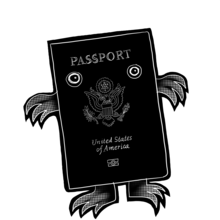
Advanced Passenger Information System (APIS)
Advanced Passenger Information System (APIS) is an electronic data system that allows commercial airlines to transmit traveler data directly to Customs and Border Patrol.
In this section, we describe key Department of Homeland Security, FBI and commercial data systems in detail. We have assigned each database an incarnation as a fantastical beast, creating a “bestiary” that we think illustrates the characteristics and reach of these complex systems.
The old world is dying, and the new world struggles to be born: now is the time of monsters.
Antonio Gramsci

Advanced Passenger Information System (APIS) is an electronic data system that allows commercial airlines to transmit traveler data directly to Customs and Border Patrol.
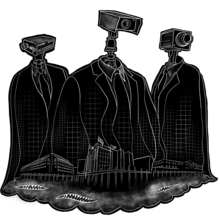
Alien Criminal Response Information Management System (ACRIMe) is a web-based ICE data system used by contract analysts at ICE’s Law Enforcement Support Center (LESC) to access criminal legal and DHS databases in order to cross-reference a person whose immigration status is unknown.

Analytical Framework for Intelligence (AFI) is a Palantir tool, uses profiling algorithms created for former President Trump’s “Extreme Vetting” initiative to “detect trends, patterns, and emerging threats, and identify non-obvious relationships between persons, events, and cargo.”
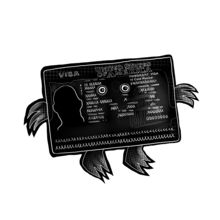
A person whose visa has expired is tracked through Custom and Border Patrol’s Arrival and Departure Information System (ADIS), which is used at entry and exit points, and includes photos, biographical and visa information, including the end date for an authorized stay.

The Automated Targeting System (ATS), is Custom and Border Patrol’s main computer system that defines and predicts “risk,” and is one of the most important connective databases for current migrant data criminalization processes.
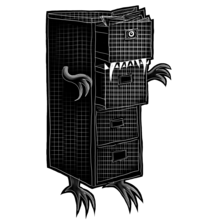
Central Index System (CIS) is US Citizenship and Immigration Services' main database, containing biographical and status information of applicants seeking immigration and non-immigration benefits.
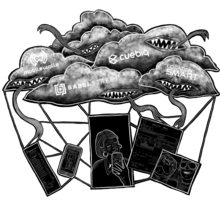
Commercial data brokers collect and sell information about us collected from photos posted to social media, historic geolocation data collected by our cell phone apps, banks, credit agencies, purchase history, education records, employment records, property records and real-time location.
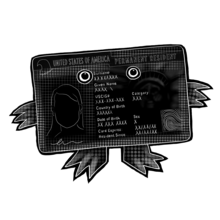
Computer Linked Application Information Management System (CLAIMS 3) is the case management system used by US Citizenship and Immigration Services to process, approve and deny applications for, among other things, lawful permanent residency, temporary protected status, and work authorization.
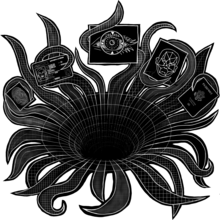
Enforcement Integrated Database (EID) is an ICE “database repository” that stores extensive biometric and biographic information of individuals encountered, arrested, detained and deported by DHS sub-agencies. EID applications work together to create “person-centric” profiles of criminalized migrants that link with disparate data points from dozens of federal databases — including DNA samples, the US Courts’ PACER system files and US Postal Service bulk address datasets — creating a fractal of criminalization potential.

FALCON is Homeland Security Investigations’ customized version of Palantir Gotham, a relationship mapping and predictive tool that provides search, analysis, geospatial referencing, reporting and connects multiple datasets. FALCON, like other Palantir tools, maps relationships between people and events, can organize information temporally or geographically, and creates data visualizations linking addresses, people, or organizations, along with geographic and chronological data points.
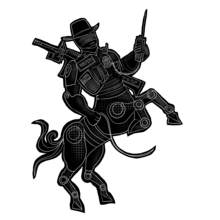
TECS, Custom and Border Patrol’s international entry/ exit log of crossings of US borders since 1987, includes free-form notes written by Border Patrol agents and is being “modernized” into ICM, an “intelligence system” and database index built by the Silicon Valley tech company, Palantir.
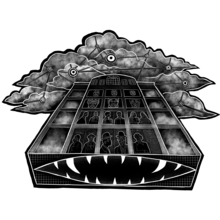
The Automated Biometric Identity System (IDENT) is the central DHS biometric data registry for foreign nationals who have entered the US. Created in 1994, it stores fingerprints, and more recently, facial photographs and iris scans for biometric identification and cross-checking against other law enforcement datasets. It is expected to be replaced by the Homeland Advanced Recognition Technology system (HART), a multi-billion dollar upgrade that would exponentially expand the agency’s capacity to collect, share and analyze a scaled-up and expanded range of biometric data, to be stored on Amazon Web Services’ GovCloud.
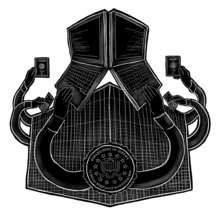
Described as the "lifeblood of law enforcement," NCIC is a computerized index and central federal database for open warrants, wants, and “lookouts” for people and allegedly stolen property.

The FBI’s Next Generation Identification (NGI), formerly Department of Justice Criminal Justice Information Services Division Integrated Automated Fingerprint Identification System, or IAFIS, is purportedly the largest electronic repository of biometric information in the world.

Nlets is a backbone of today's migrant data criminalization machinery, sharing information between 45,000 law enforcement organizations nationally and internationally, and checking the fingerprints of anyone booked by police against DHS records.

Passenger Name Records (PNR) is data collected by commercial airlines and booking agencies at the point of a ticket purchase that include a traveler’s name, timestamped IP address, credit card number, itinerary, email address, and information about a person’s travel companions.

Person Centric Query Service (PCQS) is a US Citizenship and Immigration Services database that allows ICE officers access to sensitive information about an applicant for immigration “benefits” such as citizenship, permanent status, temporary status, permission to apply for status, or work and travel authorization.

“Secure Flight” began as a program where commercial aircraft operators matched names from passenger reservations to FBI watchlists. Today, prediction and algorithmic tools decide who qualifies as a “risk,” and targeting rules can change daily.
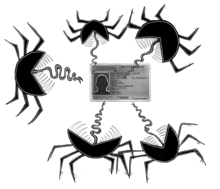
State departments of motor vehicles (DMVs) are a key source of surveillance data for law enforcement, commercial data aggregators, and others who can access it.

Student and Exchange Visitor Information System (SEVIS) is ICE’s database used to track noncitizens who enter the United States as students and exchange visitors, as well as their dependents.

The “terrorist watch list,” maintained by the Department of Justice’s FBI’s Terrorist Screening Center (TSC), includes biographical or biometric information of around one million people who are “known or suspected terrorists,” as well as their “relatives, associates, or others closely connected” to them. The standards used by the government, the evidence considered, and the list itself are secret.